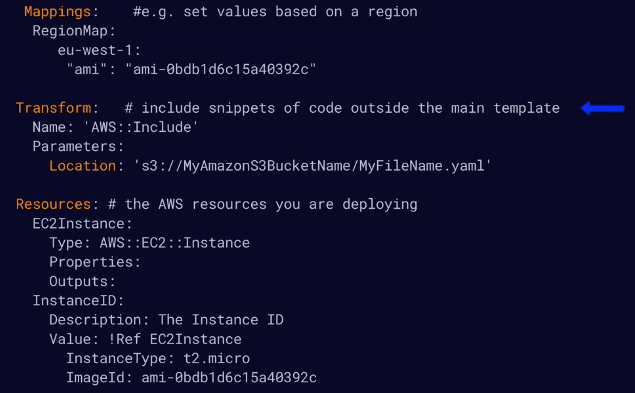aws cloudformation intro
Manage, configure, and provision your AWS infrastructure as code.
Resources are defined using a CloudFormation template that is interpreted and creates appropriate API calls for the resources you've defined. * Supports JSON and YAML
Benefits of IaC/CloudFormation
- Consistent - infrastructure is provisioned consistently with fewer mistakes
- Quick and efficient - less time and effort that configuring things manually
- Version control - you can version control and peer review templates
- Free to use - the tooling is free to use, just pay for provisioned resources
- Manage updates - can be used to manage updates and dependencies
- Rolling back - you can rollb ack to a previous state and delete the entire stack as well
CloudFormation process
- YAML or JSON template
- S3 - after creating a template you upload it to CloudFormation using S3
- API Calls - CloudFormation reads the template from S3 and executes API calls on your behalf
- CloudFormation Stack - the resulting set of resources from a template
Example CloudFormation template:
CloudFormation has quite a few non-required fields, the only thing that is truly required are the resource declarations.
Note: There are quite a few template snippets that AWS provides for template examples.
- Resources section is mandatory
- The Transform section is for referencing additional code stored in S3, allowing
for code re-use (like Lambda or template snippets/reusable pieces of CloudFormation code)
Exam tips
- IaC - allows you to manage, configure, and provision AWS infra as YAML or JSON
- Parameters - input custom values
- Conditions - provision resources based on things like environment
- Resources - section is mandatory and describes resources to create
- Mappings - create custom mappings like using a specific AMI for a given region
- Transform - allows you to reference code or reusable snippets of CloudFormation code
in S3

